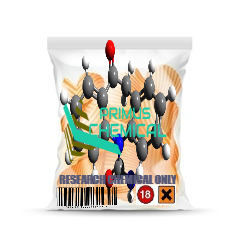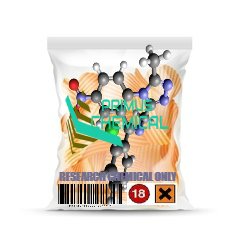Where To Buy 6-APB Online
$115.00 – $1,650.00
BUY 6-APB ONLINE
6-(2-aminopropyl)benzofuran (also known as 6-APB or by the brand-name Benzofury) is a popular synthetic entactogen of the phenethylamine and benzofuran chemical classes that produces a powerful, long-lived array of typical MDA-like entactogenic effects such as sedation, enhanced feelings of empathy, love, and sociability, muscle relaxation, anxiety relief and physical and cognitive euphoria when administered.
TECHNICAL INFORMATION
Formal Name
α-methyl-6-benzofuranethanamine, monohydrochloride
CAS Number
286834-84-2
Synonyms
6-(2-Aminopropyl)Benzofuran
Benzo Fury
Molecular Formula
C11H13NO • HCl
Formula Weight
211.7
Purity
≥98%
Formulation
A crystalline solid
λmax
207, 246, 276, 285 nm
SMILES
CC(N)CC1=CC2=C(C=C1)C=CO2.Cl
InChI Code
InChI=1S/C11H13NO.ClH/c1-8(12)6-9-2-3-10-4-5-13-11(10)7-9;/h2-5,7-8H,6,12H2,1H3;1H
InChI Key
APEWOTOLPKNSPE-UHFFFAOYSA-N
6-APB is a serotonin–norepinephrine–dopamine reuptake inhibitor (SNDRI) with Ki values of 117, 150, and 2698 nM for the norepinephrine transporter (NET), dopamine transporter (DAT), and serotonin transporter (SERT), respectively.[1] In addition, 6APB not only blocks the reuptake of these monoamine neurotransmitters but is also a releasing agent of them; that is, it is a serotonin-norepinephrine-dopamine releasing agent (SNDRA).[2] In addition to actions at the monoamine transporters, 6APB is a potent full agonist of the serotonin 5-HT2B receptor (Ki = 3.7 nM),[1][1] with higher affinity for this target than any other site.[3] Moreover, unlike MDMA, 6-APB shows 100-fold selectivity for the 5-HT2B receptor over the 5-HT2A and 5-HT2C receptors.[3][4] It is notably both more potent and more selective as an agonist of the 5-HT2B receptor than the reference 5-HT2B receptor agonist, BW-723C86, which is commonly used for research into the 5-HT2B receptor.[citation needed] Aside from the 5-HT2B receptor, 6-APB has also been found to bind with high affinity to the α2C-adrenergic receptor subtype (Ki = 45 nM), although the clinical significance of this action is unknown.[1] 6APB showed little other affinity at a wide selection of other sites.[1]
The potent agonism of the 5-HT2B receptor makes it likely that 6-APB would be cardiotoxic with chronic or long-term use, as seen with other 5-HT2B receptor agonists such as the withdrawn serotonergic anorectic fenfluramine.[1][5]
| SELECT QUANTITY | 10 Grams, 25 Grams, 50 Grams, 100 Grams, 250 Grams, 500 Grams, 1000 Grams |
|---|
Related products
RESEARCH CHEMICALS
RESEARCH CHEMICALS
CANNABINOIDS
RESEARCH CHEMICALS
CANNABINOIDS
RESEARCH CHEMICALS
RESEARCH CHEMICALS
RESEARCH CHEMICALS











